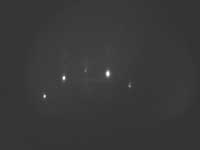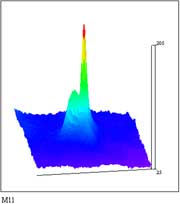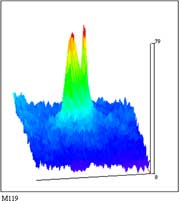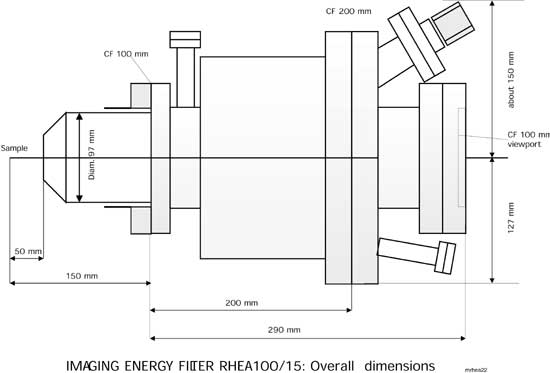Imaging RHEED Analyzer and Filter
The RHEA-100 is a high energy, high resolving power energy analyzer with imaging capability (ref. 1/2). It offers modes of operation: In the first mode, complete RHEED diagrams are energy filtered and can be viewed on a fluorescent screen. In the second mode, in-situ energy loss distributions (EELS) for selected angular ranges can measured. The analyzer offers the removal of the inelastically scattered electrons (as it is the case in LEED optics) and the fast, in-situ determination of the chemical state of the surface by EELS. Further, RHEA-100 maintains all specific advantages of the RHEED technique, such as in-situ imaging during growth, long working distances, image acquisition with video-speed, and measurement of intensity oscillations. The analyzer is depicted in Figure 1. A lens system is used to retard and collimate the diffracted electrons into a parallel beam. The collimated beam is accurately energy filtered over a wide angular range. The filtered electrons are accelerated to the screen to form a visible image. Complete energy filtered RHEED diagrams are viewed on a large fluorescent screen with an active surface of 130 mm in diameter. The diffuse background and the Kikuchi lines can be almost completely filtered out by adjusting the filter voltage to a few eV below the primary beam energy. In addition, electrons diffracted under the same angle are focused onto the screen, thus increasing the coherence length of the system.
Figure (2) shows the RHEED patterns measured on Si (111) at various filter voltages. Figure (2a) is taken at 50 eV below the primary beam energy, Figure (2b) at 22 eV, just on the top of the volume plasmon, Figure (2c) at the elastic peak, and Figure (2d) just above the sharp cut-off voltage.
Figure (3) shows details of the variation of the angular distribution for various filter energies for the sharp diffraction spot located near the center. Distribution (Figure 3a) is obtained at the maximum of the elastic peak and distribution (Figure 3b) at the volume plasmon. The angular contribution of a specific energy loss is obtained subtracting the two distributions. This contribution is shown in Figure (3c). The geometry of the CCD camera is such that one pixel corresponds to an angle of 0.3 mrad.
Highlights of the RHEA100 Energy Analyzer
References
|










